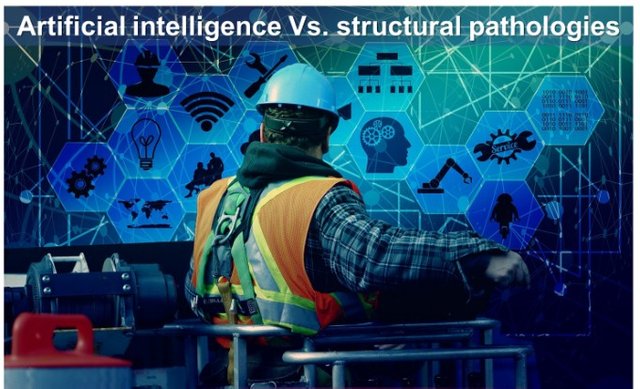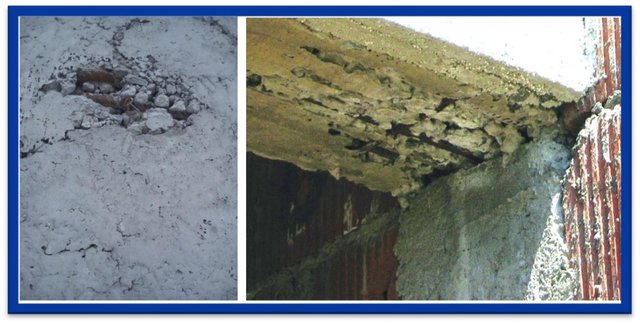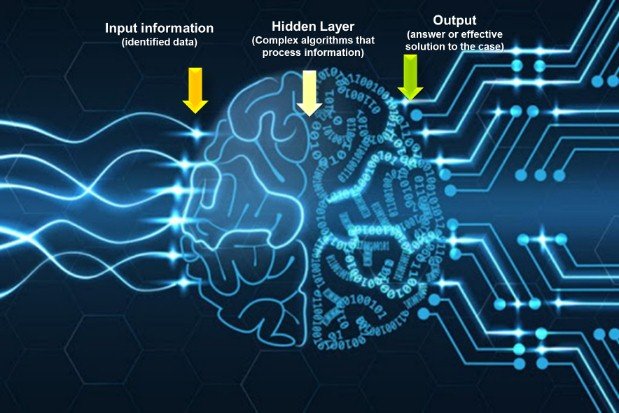
Greetings Friends of Project Hope..!
Surely you have read before about the applications of artificial intelligence (AI) in the area of robotics, in the area of medicine and surgeries, even applied to household appliances, just to mention a few.
But have you ever heard of artificial intelligence applications in the area of structural pathologies?
First of all, I explain that a structural pathology is a damage or "failure" that a building presents due to unknown causes, which is why its identification, determination of the causes that has originated the damage or pathology and actions must be proposed, proposals of corrective measures to eradicate the damage and maintenance actions to avoid future occurrences.


In the case of the role that AI plays in this topic, first I want to illustrate a little and in the simplest way how does artificial intelligence work?
AI is simply an application or equipment that emulates human behavior, making use of a simulation of the 5 senses (sight, hearing, smell, taste and touch) to identify phenomena or situations, and in this way offer the best answer or solution to the case.
In this we have that there are AI equipment and applications (apps) that:
.- Think like a human being by creating artificial neural networks.
.- They act like a human being, through the integration of robotics that allow them to walk, talk, observe and even laugh.
.- They use logical/rational thinking like a human being, to the point that they can comment and respond and can also act rationally.
Simply put, this is how AI works

How is it applied in the area of structural pathologies?
I explain this through a very simple example (teachers love to explain things). If a building inspector performs a perceptual control on an element of a building, be it a beam, column, floor or ceiling slab and the first thing to do is:
- "Observe the damage"
- "Measure the dimensions of the damage as length, width or depth"
- "Identify the material of the structure" either concrete, structural steel or wood
- Then evaluate the “magnitude of the damage”, that is, how simple or how serious it is
This entire sequence is the initial evaluation stage, this is done by the engineer and takes a certain time in which he should not lose any detail.
This is where AI comes in with the purpose of saving resources such as time and money, through an application for a mobile phone or computer, these activities can be carried out and it would work as follows:

The final process is summarized to take photographs that will be used to identify failures and provide solutions. But, although it seems very simple, the great work to get to create the application has not been described, because the most difficult thing is to create a neural network with the proper programming that allows the equipment or application to function in this way.

The great process of creating the neural network that will give life to the AI team or app is quite complex, but it is not difficult. The most important thing is to have the input data identified, that is, the information necessary to identify the existence of a problem, then it is necessary to know the process of evaluation or analysis of the problem and this procedure must also be translated into a programming language (algorithms ), finally, the mechanism or form in which the response will be issued and what are the types of response you wish to receive based on the evaluation carried out previously must be considered.
As an interesting fact I want to add, first this is not done by a single person, it requires a multidisciplinary team, taking as an example the case of structural pathologies, the team would be made up of civil engineers, systems engineers, computer scientists and programmers to begin with. But the most interesting thing is that currently there are software such as Matlab, Python, Orange, Dianne, among others, which are of great help to create artificial neural networks and you do not need to have great programming knowledge.

I always like to close a topic with a question or some ideas:



Banners are courtesy of @josevas217
- Do you think artificial intelligence is of great help in identifying flaws in any process?
- Is the use of AI really useful in identifying and solving the faults that some buildings may present?
- Could artificial intelligence replace the good judgment and experience of a civil engineer?
All images were edited by me using power point.



Hello @tocho2
Interesting topic.
Those questions that you leave at the end I have asked myself but around my area, which is medicine.
To a great extent all professions can benefit from the appropriate use of these technological tools, without doubt the answer is yes.
They are a great support, they can detect things faster that could happen in the eyes of very experts. However, there is something that is specific to human beings and is related to the same human sensitivity, which I see as difficult to match by any technology no matter how advanced it is.
I don't know of any of those programs you mention that have
I've never dared to mess with this programming stuff.
Downvoting a post can decrease pending rewards and make it less visible. Common reasons:
Submit
Hello @josevas217, you are absolutely right in what you say, human sensitivity can never be equaled by AI, because the professional's criteria is subjective and does not always rely on theories that can be replicated or imitated. There are other factors that can never be emulated by AI.
When you have your free time, check the web and see what these programs consist of.
See you soon
Downvoting a post can decrease pending rewards and make it less visible. Common reasons:
Submit
Se ha comprobado la efectividad de las IA aplicada en diferentes campos. Antes dudaba y hasta me molestaba hablar de este mundo de robots pero profundizar más en el tema comencé a comprender y hubo empatía. Dada las experiencias sí creo que logren detectar fallas las IA por ende, sería de gran utilidad.
La IA nunca podrá superara la i inteligencia humana, tampoco podrá sustituir la intervención del hombre. Podrá en dado caso, reemplazar las actividades desempeñadas por humanos pero hasta allí.
Downvoting a post can decrease pending rewards and make it less visible. Common reasons:
Submit
Estoy muy de acuerdo contigo @belkisa758, el humano es irreemplazable. Podríamos decir que el uso de IA es de gran ayuda pro no un factor definitivo.
Un abrazo, gracias por comentar
Downvoting a post can decrease pending rewards and make it less visible. Common reasons:
Submit